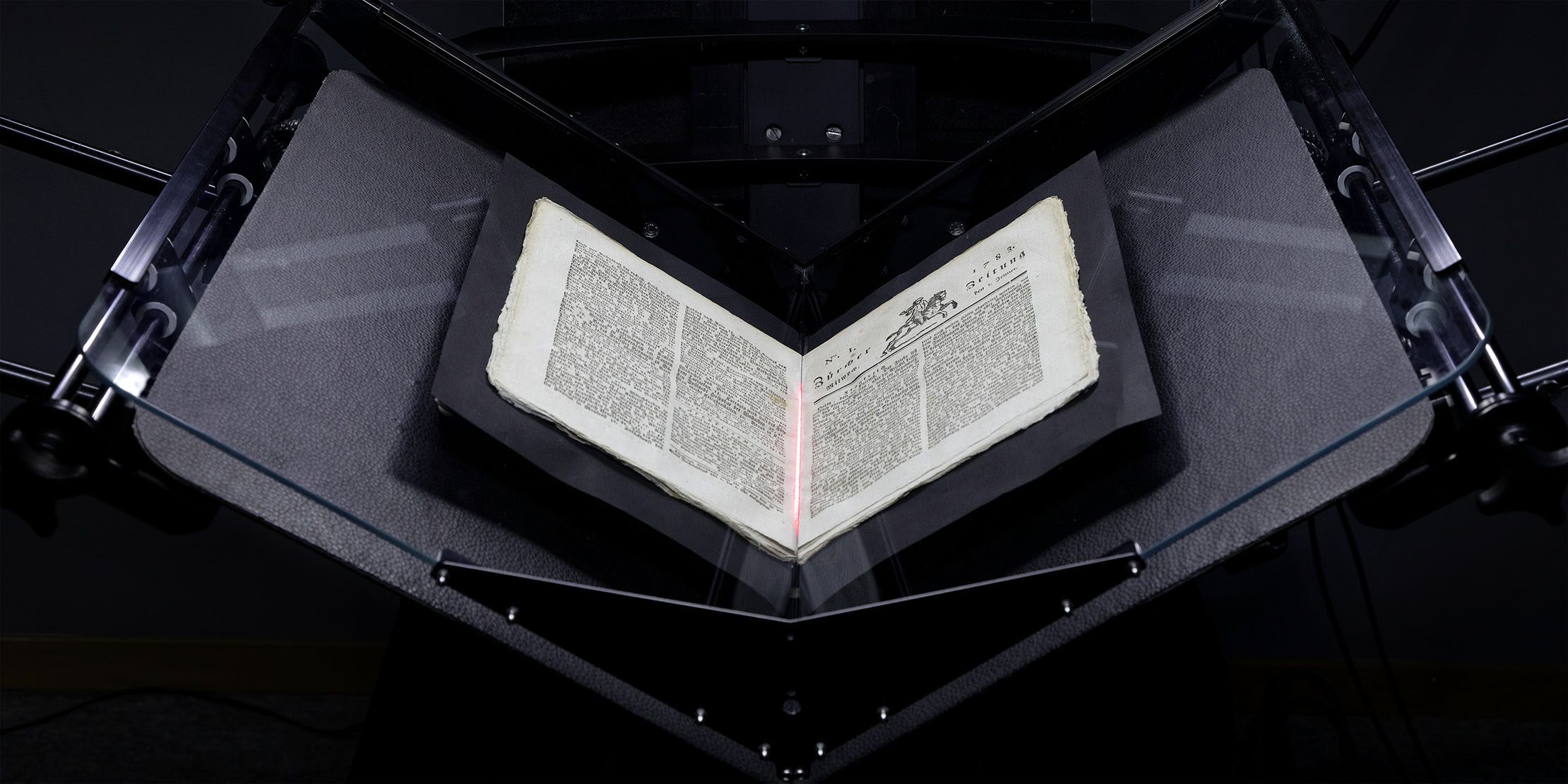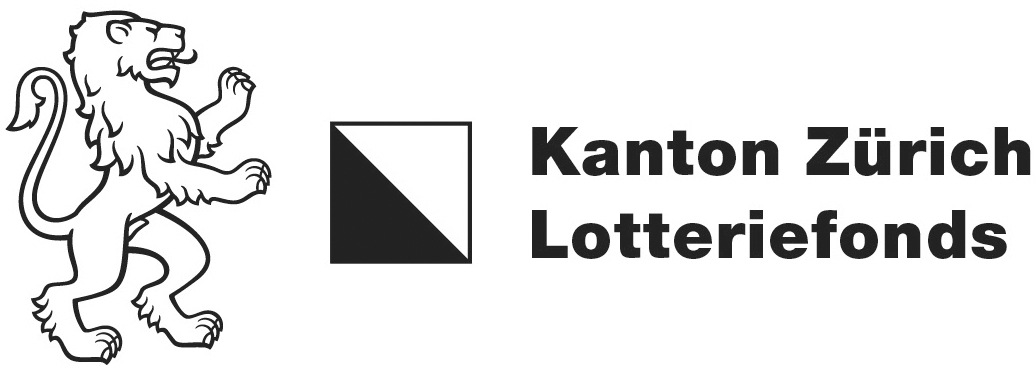
Research and digitisation
The ZB supports external research projects and realises its own digitisation projects. For these purposes, we develop metadata and produce high-quality digitised versions of our own collections, which are presented online on national platforms.
Current research and digitisation projects
The Special Collections of the ZB participate in university research projects with great commitment. The metadata are collected according to project-specific requirements and meet the highest scientific standards. The academic and technical staff of the ZB develop project-specific indexing variants and data models with you: We are more than happy to help you find innovative implementation solutions that promise additional benefits for your research projects. Our national and international collaborations are supported by private and state funding institutions and we are well networked with the academic research community.
Digital edition of the correspondence of Johann Caspar Lavater
The ZB owns more than 20,000 letters written by and sent to Lavater (1741-1801), the great 18th century theologian from Zurich. For the online edition of his correspondence (lavater.com), we are creating about 110'000 digital copies and are working on the corresponding metadata, which will be exported to the edition database. A staff position (50%) financed by the SNF was set up in the ZB for the project period 2018-2020. The edition project is located at the German Department of the University of Zurich.
Contact:
The Physiognomic Cabinet of Johann Caspar Lavater
The busy Zurich pastor Lavater (1741-1801) became known throughout Europe for his considerations of physiognomics. The Physiognomic Cabinet, which was largely unknown to date, was both the basis and the result of his reflections. The ZB owns around 1500 images of this collection, which we will index and digitise from 2019 to 2020. These digital copies will then be integrated into the online Edition Johann Caspar Lavater (lavater.com). The UBS Culture Foundation financially supports the one-year project.
Contact:
Conrad Ferdinand Meyer’s correspondence with his publisher in digital form.
Conrad Ferdinand Meyer’s (1825-1898) correspondence with his Leipzig publisher Hermann Haessel reveals an insight into the development of important literary works by Meyer. The ZB is digitising approximately 2500 letters from its collection for the historical-critical C.F. Meyer Letter Edition and has been developing the necessary metadata in 2019. Ultimately, the SNF-sponsored edition project by the Deutsches Seminar of the University of Zurich (cfmeyer.ch) will import approximately 10,000 digitised copies of the ZB into its database.
Contact:
«Itten vernetzt»: digital indexing and presentation of Johannes Itten’s work
The ZB owns the written estate of the painter, art theorist and educator Johannes Itten (1888-1967), which comprises approximately 17 linear meters including around 60,000 pages of correspondence, manuscripts, prints, life documents and various kinds of images. As part of the «Itten vernetzt» project, we are initially indexing our holdings. In cooperation with the Chair of Art History at the University of Regensburg and the Heidelberg University Library, we will then digitally link selected documents to the ontology-based catalogue of works on arthistoricum.net. The first project phase lasts from 2019 to 2020.
Contact:
Retro digitisation of the NZZ (1780-today)
In cooperation with the Neue Zürcher Zeitung (NZZ) and the Swiss National Library (NL), the ZB is digitising every volume of the NZZ published to date. These approximately 1.9 million scanned newspaper pages will be freely available to the public online through the NL on e-newspaperarchives.ch (e-npa.ch).
External service providers are segmenting and structuring the digitised material and preparing it for automatic full-text search using optical character recognition (OCR) processes. As a result, the public as well as researchers and scientists can search any issue of the NZZ by keywords. Every article published at least 25 years earlier (from the time of the search) is available for free download.
Publication is scheduled for the end of 2021. The digitisation, preparation and publication of all NZZ volumes will cost a total of approximately one million CHF. The lottery fund of the Canton of Zurich pays half of the costs with a contribution of CHF 500,000. The Swiss National Library and the Zentralbibliothek Zürich cover 20 percent each. The UBS Culture Foundation is contributing CHF 100,000 to this important digitisation project.
The ZB already produced digital copies if the volumes 1780-1950 in cooperation with an external service provider in the first half of 2019. A project team from the Institute of Computational Linguistics at the University of Zurich is further processing these images. This project is part of the three-year SNF-funded research project «Impresso. Media monitoring of the past». One of its goals is to test promising new methods of automatic optical text recognition (OCR).
The the press release about the NZZ digitisation (in German).
Radio report «Wenn der Scanner summt» in the series Kontext on SRF2 Kultur from 13 November 2019 (in German).
We would like to thank the following institution for its funding:
Contact:
Cooperation with Google Books
After the University Library of Lausanne, the Bayerische Staatsbibliothek in Munich and the Austrian National Library, the three major German-speaking Swiss city, canton and university libraries in Bern, Lucerne and Zurich will now let Google digitise part of their holdings to be published on Google Books and therefore be globally accessible to the public. Google will transport approximately 250,000 books issued from 1700 to 1900 from these three libraries to its own digitisation centre in Munich between 2020 and 2022, where they will be scanned quickly and gently using high-performance scanners. The libraries do not have to pay Google and they will receive the digitised material for their own use. The ZB will start delivering their books in 2021 and is participating with a total of around 70,000 volumes.
Contact:
Completed research and digitisation projects
DigiTUR (2013-2018): more than five million scans produced
From 2013 to 2018, the ZB carried out its own digitisation project during which we indexed and made available online representative groups of the Zurich cultural assets from our holdings. Thanks to the funding of the lottery fund of the canton of Zurich and the city of Zurich with a total of approximately CHF 10 million, we produced over five million scans, which are available on national platforms (e-rara.ch, e-manuscripta.ch, e-newspaperarchives.ch and e-periodica.ch). We retro-digitised 4.5 million pages of old prints, 400,000 pages of historical Zurich newspapers, around 100,000 pages of handwritten materials and music each, 50,000 graphic sheets and photographs and around 2,500 maps and panoramas. More than 20 specialists from all departments participated on the project. A short YouTube video by Lorenz von Meiss documented the project in 2017. Our DigiTUR project still is one of the largest digitisation projects carried out by a Swiss library to date.
The following holdings were digitised:
From the manuscript departement
- Illuminated and functional manuscripts of the early modern period with reference to Zurich (including works by Heinrich Bullinger, Erhard Dürsteler, Aegidius Tschudi, and the Wickiana)
- Autographs of outstanding Zurich personalities (including Johann Jakob Bodmer, Johann Jakob Breitinger, Salomon Gessner, Johann Jakob Scheuchzer)
From the rare books departement:
- Zurich and Swiss printed books up to 1800 (most notably Klosterbibliothek Rheinau and Bibliothek der Naturforschenden Gesellschaft Zürich)
- Josias Waser pamphlet collection on the Thirty Years' War from the 17th century
- Personal libraries of Johann Jakob Bodmer and Huldrych Zwingli
From the music departement:
From the departement of prints and drawings and the photo archive:
- Views from the canton of Zurich from 17th to 20th century
- Portraits of Zurich personalities
- Zurich’s art from 17th to 20th century (including photos by Robert Breitinger, drawings by Johann Rudolf Rahn, designs from the glass painting studio Röttinger, estate of Regina de Vries)
- Bookplates, history sheets, caricatures, traditional costumes, etc.
From the map departement:
- Zurich maps from the 16th to 19th century
- Zurich panoramas from 18th to 19th century
Newspapers and magazines:
- Zürcher Illustrierte (on e-periodica.ch)
- Chronicle of the city of Zurich
- Eidgenössische Zeitung
- Neue Zürcher Nachrichten NZN
- Zürcherische Freitagszeitung
- Zürcherisches Wochenblatt
We would like to thank the following institution for its funding:
Contact:
Retro-digitisation for research projects
We recommend research projects that require more than 100 scans to contact us at an early stage of their project, at the latest while writing the research proposal. In a joint discussion the exact digitisation needs can be analysed and appropriate solutions can be worked out accordingly (image and metadata, data formats and transfer, etc.). In addition, we calculate reliable information on the financial and time expenditure for the project. This way, the project group can give account of the exact costs as well as production and delivery times to the research funding bodies.
For a consultation, please contact our product manager for digitisation:
The following aspects are relevant for planning:
- Which ZB holdings are involved? Please include the signatures and, if possible, page numbers or linear metres
- Brief description of the project
- Project duration and deadlines; current project status
Please note: The Zentralbibliothek may refrain from digitising certain objects for conservation or similar reasons.
Digitisation in our in-house digitisation centre (DigiZ) or by external service providers
Normally, we carry out the digitisation in our in-house digitisation centre (DigiZ). On the one hand, valuable objects and collections should not leave the house, on the other hand, we can best monitor and maintain the quality standards internally.
If a project can be implemented more efficiently and therefore more cost-effectively by external service providers, this option will also be examined. This applies to projects which, due to either their size or nature, would tie up considerable resources internally resp. require additional resources:
- Newspaper digitisation: The ZB does not currently have a specialized scanning robot for this purpose. For the segmentation of the digital copies (OCR and in-depth indexing at article level), automated processes are also necessary, which can only be carried out by specialised service providers.
- Mass digitisation (Big Data projects): the focus is on copyright-free books and magazines from the 18th and 19th centuries that have no particular cultural and historical value for the ZB.
- Complex and extensive restoration work required for digitisation: Due to limited in-house resources (personnel and infrastructure), special conservation measures may be carried out by external service providers for commissions by research projects.
Conservational preparation
The effort for conservational measures with regard to digitisation depends on the value of the objects. The objectives of such measures are optimisation of readability (e.g. by unbinding) and stabilisation as well as post-processing. In case of doubt, digitisation will be avoided.
If it is justifiable in terms of the value of the content of the holdings and their conservation status, appropriate measures can also be taken to facilitate or accelerate the scanning (unbinding).
Compliance with international standards
The DigiZ works with a wide range of equipment to meet all the requirements of the diversity of originals (formats, materials, conservative condition, etc.). We carefully monitor the technological development and, if necessary, adapt through appropriate purchases (faster scanners, scanning robots, workflow software).
With regard to the scan quality, the DigiZ complies with internationally accepted standards in terms of format, resolution and colour management. We purchase scanners based on the quality standards developed by Metamorfoze and FADGI for the digitisation of cultural goods. We are scanning in TIF, RGB, 24-bit to ensure that the results are readable for upcoming generations using common digital long-term archiving (DLZA) systems. Holdings of a large scope and where colour does not contribute to the information or the quality of the OCR can be scanned in grayscale to optimisze the storage requirements.
